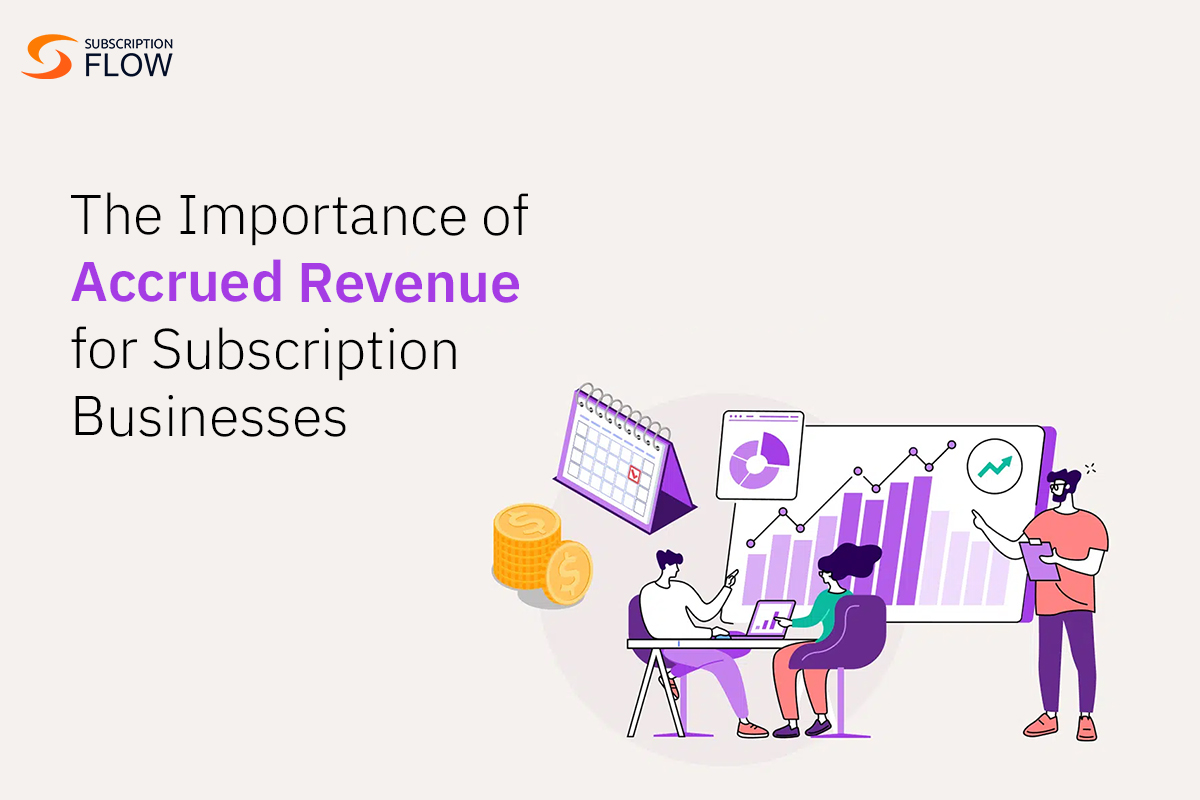
The Importance of Accrued Revenue for Subscription Businesses
In the context of subscription models, accrued revenue is the money that a business has made but hasn’t yet received in cash. Accrued revenue is important for accurate financial reporting, as it ensures that revenue is recognized in the period in which it is earned, regardless of when the cash is received.
However, there are various complexities of handling accrued revenue in subscription businesses. This article will provide helpful advice on when and how to recognise revenue, how to handle accrued revenue entries, and how to deal with issues specific to subscription cycles.
What Is Accrued Revenue?
Revenue that a business has generated but has not yet been paid or recorded in its books is referred to as accrued revenue. It stands for the revenue recognition that occurs prior to the receipt of the cash payment. This usually happens when a customer receives products or services, and revenue is recorded even though payment has not yet been received.
Accrued revenue in accounting is shown as revenue on the income statement and as an asset on the balance sheet. Debiting an asset account (like “Accounts Receivable”) and crediting a revenue account is the process of making an entry to recognise accrued revenue. Following receipt of the payment, the associated cash or accounts receivable account is debited to reflect the adjustment to the accrued revenue.
Also Read: Understanding Subscription Revenue Management with a New Approach
The Subscription Business Model and Accrued Revenue
In the subscription business world, the customer is recurrently charged for what is being used, and there is a strong relationship between subscription billing and accrued revenue as both play a significant role in financial stability and accurate reporting. Subscription billing is a complete business model where the customer pays a regular fee for the subscription plan that he opts for. It inherently involves the recognition of revenue over time.
Here, the accrued revenue has its impact on various subscription business KPIs i.e. Monthly Recurring Revenue (MRR) and Annual Recurring Revenue (ARR) etc. It signifies the revenue that is being earned but not yet received and has become part of the revenue stream.
In order to sustain financial health and foster transparency, it is important for subscription retailers to understand the complexities of subscription cycles that in the end play a role in bringing investments for new projects and funding for business growth. Therefore, accrued revenue is not just about the revenue and the profits that a company earns.
Timing Recognition for Earned Revenue
It is important for businesses that opt for accrual accounting methods to timely recognize the accrued revenue. The timing of when to recognize accrued revenue hinges on the moment when the business has substantially fulfilled its obligations and the revenue is earned, even if the actual cash payment has not been received. In the subscription business model, revenue recognition also goes in cycles when the services or products are being provided, payments are processed and received after a certain time, and then the revenue is recognized.
It is important to note in the form of milestones when the revenue is received and recognized because on the basis of these milestones, you will be able to make accrued revenue part of your actual recurring revenue or the turnover. By doing so, businesses not only adhere to accounting principles but also ensure a faithful representation of their financial performance, facilitating better decision-making and transparency for stakeholders.
Also Read: Optimizing SaaS Revenue Management: A Comprehensive Guide
Accounting Principles for Accrued Revenue in Subscription Models
Subscription model accounting for accumulated revenue requires adherence to basic accrual accounting standards that control revenue recognition. First of all, regardless of when the money is received, income must be recorded at the time it is earned, according to the revenue recognition principle. This means that for subscription-based enterprises, revenue must be recognized when services are rendered throughout the subscription period.
Additionally important is the matching principle, which mandates that companies match revenue with the costs invested in order to earn that revenue. This may entail matching the revenue recognized in subscription models to the expenses related to continuing service provision.
Furthermore, in order to reduce the risk of overstating financial performance, organizations should exercise caution and record income only when it can be reasonably assured. This is the idea behind conservatism.
Following these guidelines guarantees better financial reporting for subscription businesses.
All businesses need to have control over their finances and expenses. In order to have better control, they opt for different strategies, tools and technology. Calculating accrued revenue and making it part of the earned revenue at the right time is important for subscription businesses as well because it helps them in financial reporting and audits.
In the subscription business world, there is an emphasis on revenue recognition and accrued revenue calculation because here, the process of earning revenue runs in a cycle. It starts with the customer onboarding or renewal of subscriptions and ends with the subscription period. The length of the cycle depends on the time period of subscription plans that you offer.
If you want the best platform that can help you with revenue management for your business, then SubscriptionFlow is the one that you need to opt for. Contact our team of experts now to schedule a demo.










